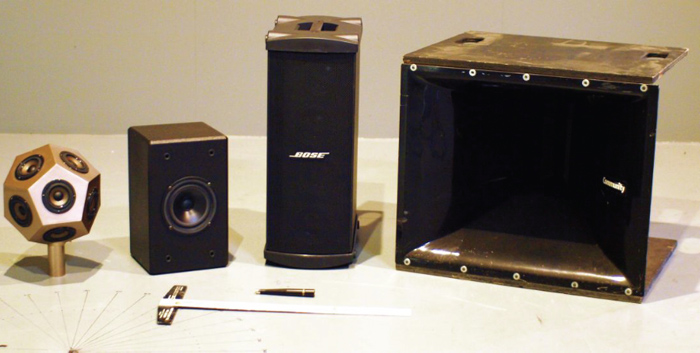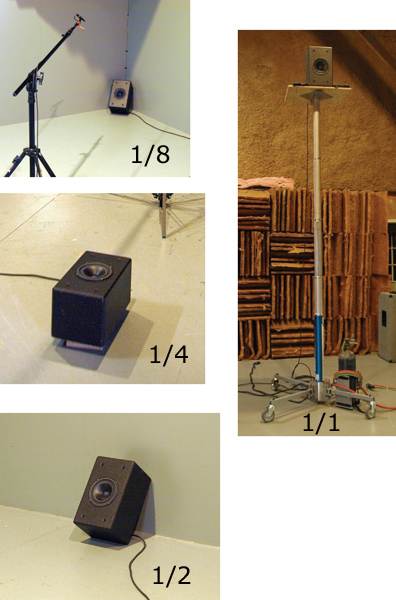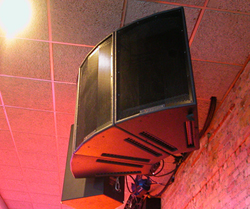It’s nearly impossible to mount a loudspeaker in a room without placing it near a room boundary. Some logical questions arise:
1. Does this affect the response?
2. Is the effect good or bad?
3. Can I use the boundary to my advantage?
4. Will treatment help?
And, can room boundaries be a “tool of the trade”?
Space-Loading
Space-loading loudspeakers means that the otherwise spherical radiation is limited by a boundary or boundaries.
Some common scenarios are shown in Figure 1 (below), and are often described by the fraction of a sphere to which the radiation is confined. Since these are fractions the correct usage would be “1/n-space” but I have used the common descriptors that omit the “1/”.
The classical theory states that the effective gain realized from incoherent summing due to radiation confinement is +3 dB for each additional boundary, and that +9 dB relative to the free-field response can be achieved by “corner-loading” a loudspeaker.

In acoustics the results are never that ideal, so part of my motivation was to determine when this or something different happens.
We would certainly expect the boundary interaction be frequency-dependent, and indeed it is. This makes the answers to the boundary questions the usual “it depends.”
Overview
The test environment is a large, open space with very rigid boundaries on three surfaces.
I selected a loudspeaker line-up with some devices commonly used by contractors – a bookshelf loudspeaker, a subwoofer and a medium-format horn (Figure 2). A microphone and dodecahedron were added to round out the field.

Each loudspeaker was first measured (Figure 3) on a 12-foot Genie-lift with the measurement mic in the approximate far-field (1/1- space).
Next it was placed on the floor with the mic placed overhead (1/2-space). The floor-wall junction provided the 2-boundary condition (1/4-space), and the floor-wall-wall junction the 3-boundary condition (1/8-space). The mic-to-loudspeaker distance was kept the same for each placement.
The Results
It is always both interesting and educational to compare ideal theory with actual measurements. Some of the results were as expected. Some were as expected with some interesting caveats.

There were also a few surprises. Some points-of-interest have been highlighted in the plots.
A general conclusion from the measurements is that if your objective is accurate sound reproduction with minimal coloration, it is bad news to place a loudspeaker anywhere near a boundary. The striking exceptions are that of the horn/driver and the in-wall.
While I often hear horns condemned as “unmusical” or “harsh,” they are the only devices that we have that can be placed near boundaries without detrimental effects.
How “musical” is a low-directivity loudspeaker whose response is dominated by severe comb filters?
Another conclusion from the study is that equalization is generally inadequate for dealing with boundary interactions. While a “less worse” response may be achieved, far better results come from flying the loudspeaker in free space.















